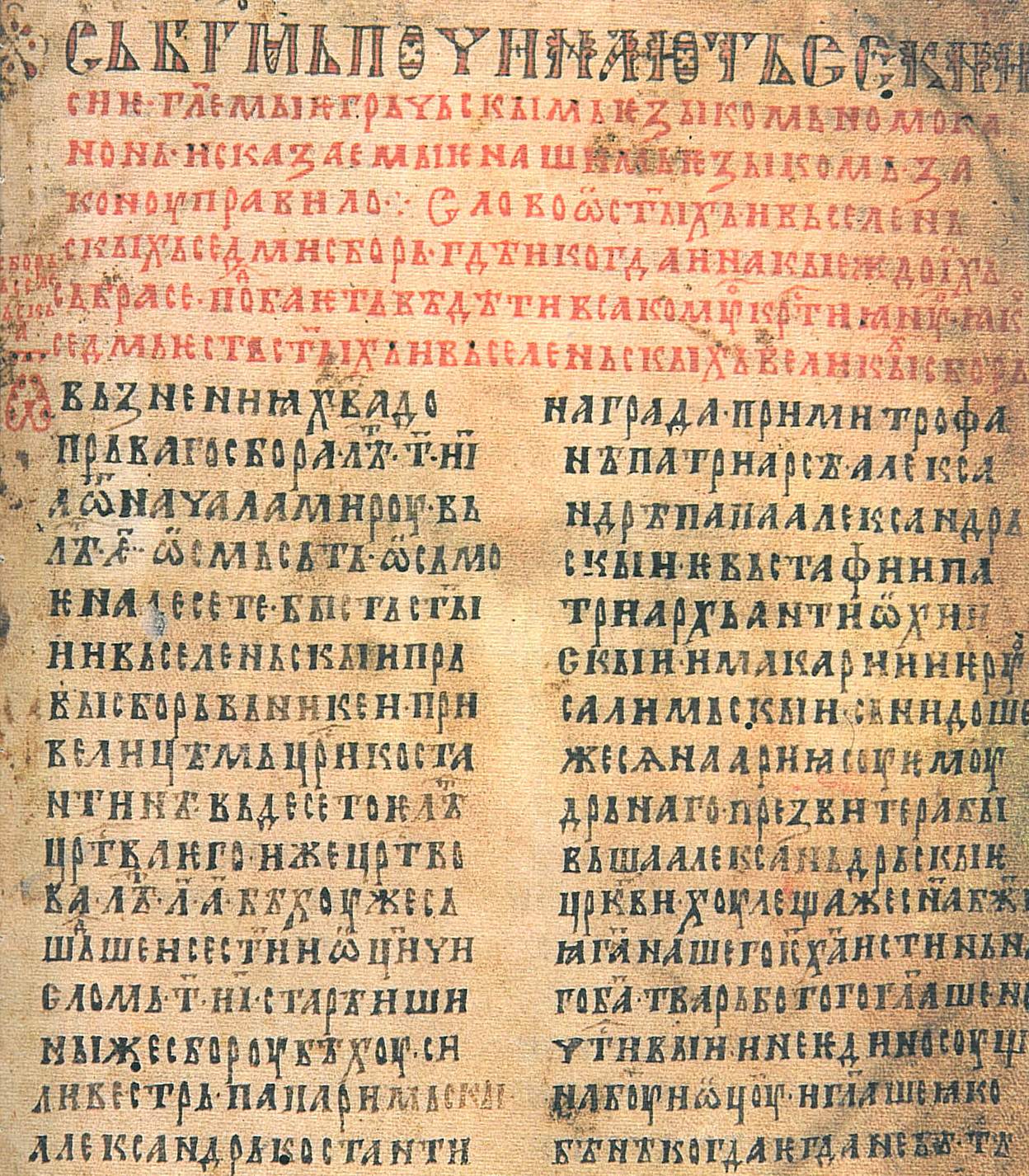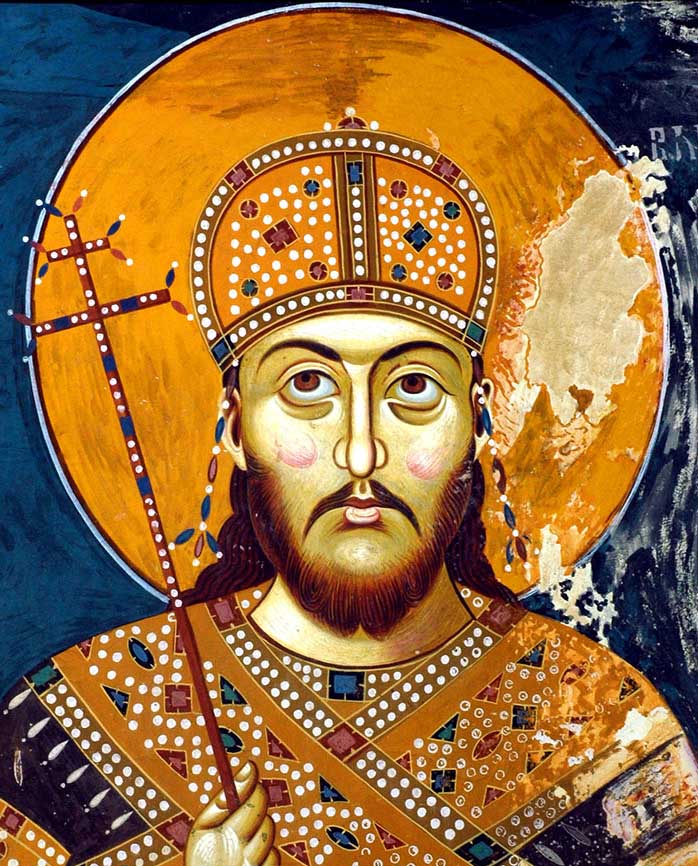|
Medieval Serbian Law
Serbian medieval law spans a period of time from the first half of the 7th century AD to the second half of the 15th century AD. While the origins of the Serbian medieval law can be traced back to folk customs and beliefs, the forms of written law started to appear owing to Serbian emperors, kings and archbishops of that era. It is through their charters and various codes that punishments were introduced and status, civil, criminal and procedural law started developing. Serbian medieval law was visibly influenced by the Byzantine law whose impact was profound. Status Law As in other medieval states, in medieval Serbia there were classes- strata of population that had legally (and not only factually) different positions and privileges. Data on the class structure of medieval Serbian society have been known since the time of Nemanjić. At that time, the upper class was aristocracy and was divided into velika (large nobility) and mala vlastela (lesser nobility) and vlastelicice; the ... [...More Info...] [...Related Items...] OR: [Wikipedia] [Google] [Baidu] |
Savino Zakonopravilo - Ilovichki Prepis, 1262
{{disambiguation ...
Savino may refer to: * Savino (surname) Given name *Savino Pezzotta (born 1943), Italian trade unionist and politician *Savino Guglielmetti (1911–2006), Italian gymnast * Savino Bellini (1913–1974), Italian footballer * Savino Bernardo Maria Cazzaro Bertollo (1924–2017) *Savino Bratton, a character from the television drama ''The Wire'' Places * Savino, Russia, name of several inhabited localities in Russia *Bolshoye Savino Airport, Russia * Bolshoye Savino, Russia * Lupche-Savino River * Lake Lupche-Savino, Russia *Savino Selo (literally ''Savino village''), Serbia *Costa San Savino, Italy *Monte San Savino, Italy See also *, Italian comune * Saint-Savin (other) *A.C. Sansovino Associazione Calcio Sansovino is an Italian association football club, based in Monte San Savino, Tuscany. Sansovino currently plays in Eccellenza. History Foundation The club was founded in 1929. From Serie C2 to Serie D From the 200 ... [...More Info...] [...Related Items...] OR: [Wikipedia] [Google] [Baidu] |
Charter Of Hilandar
Charter of Hilandar ( sr, Хиландарска повеља) is the founding charter of the Hilandar monastery, the cradle of the Serbian Orthodox Church and main endowment of Stefan Nemanja and Saint Sava. It was written in 1198, while the second revision, of Stefan the First-Crowned in 1200–01. Until 1896, the oldest Serbian charter in the Hilandar archives was the founding charter of Hilandar, while the oldest manuscript book in the Hilandar library was Miroslav's Gospel. Both charters are written in Serbian recension of Church Slavonic (literary) language, but the vernacular is present in the parts where the gifts to Hilandar are discussed. The original version of Stefan II's revision is located in the Hilandar. See also *Hilandar Typikon *Karyes Typikon *Serbian manuscripts References Sources * * External links * *{{cite web, title=Hilandarska povelja Simeona Nemanje, work=Sveti Sava: Sabrani spisi, publisher=Projekt Rastko, language=sr, url=http://www.rastko.rs/kn ... [...More Info...] [...Related Items...] OR: [Wikipedia] [Google] [Baidu] |
Zakonopravilo
The Nomocanon of Saint Sava ( sr-Cyrl, Номоканон светог Саве), known in Serbian as () or (), was the highest code in the Serbian Orthodox Church, finished in 1219. This legal act was written in simple folk language and its basic purpose was to organize the continuation and functioning of the Serbian Kingdom and the Serbian Church. It was originally printed under the name ''Rules of Speech'' () in the Serbian language at Raška, Serbia in two posterior issues, one for Wallachia and another one for Transylvania in 1640. Today it is considered to be Serbia's first Serbian-language church-state constitution. Byzantine nomocanons The first time a similar church codex is mentioned was in 451 in relation to decisions made in the Council of Chalcedon. This codex includes a synopsis of all the rules. It is believed that this codex was written by Stephen of Ephesus which is why it was named the Synopsis of Stephen of Ephesus. John Scholasticus, the Patriarch of C ... [...More Info...] [...Related Items...] OR: [Wikipedia] [Google] [Baidu] |
Dušan's Code
Dušan's Code ( sr-cyr, Душанов законик, ''Dušanov zakonik'', known historically as ''Закон благовјернаго цара Стефана'' – Law of the pious Emperor Stefan) is a compilation of several legal systems that was enacted by Stefan Uroš IV Dušan of Serbia in 1349. It was used in the Serbian Empire and the succeeding Serbian Despotate. It is considered an early constitution, or close to it; an advanced set of laws which regulated all aspects of life. Background On 16 April 1346 (Easter), Dušan convoked a huge assembly at Skopje, attended by the Serbian Archbishop Joanikije II, the Archbishop of Ochrid Nikolaj I, the Bulgarian Patriarch Simeon and various religious leaders of Mount Athos. The assembly and clerics agreed on, and then ceremonially performed the raising of the autocephalous Serbian Archbishopric to the status of Serbian Patriarchate. The Archbishop from then on was titled Serbian Patriarch, although one document called him ... [...More Info...] [...Related Items...] OR: [Wikipedia] [Google] [Baidu] |
Code Of Justinian
The Code of Justinian ( la, Codex Justinianus, or ) is one part of the ''Corpus Juris Civilis'', the codification of Roman law ordered early in the 6th century AD by Justinian I, who was Eastern Roman emperor in Constantinople. Two other units, the Digest and the Institutes, were created during his reign. The fourth part, the ''Novellae Constitutiones'' (New Constitutions, or Novels), was compiled unofficially after his death but is now also thought of as part of the ''Corpus Juris Civilis''. Creation Shortly after Justinian became emperor in 527, he decided the empire's legal system needed repair. There existed three codices of imperial laws and other individual laws, many of which conflicted or were out of date. The Codex Gregorianus and the Codex Hermogenianus were unofficial compilations. (The term "Codex" refers to the physical aspect of the works, being in book form, rather than on papyrus rolls. The transition to the codex occurred around AD 300.)Jolowicz, 1972, p. 463 ... [...More Info...] [...Related Items...] OR: [Wikipedia] [Google] [Baidu] |
Basilika
The ''Basilika'' was a collection of laws completed c. 892 AD in Constantinople by order of the Eastern Roman emperor Leo VI the Wise during the Macedonian dynasty. This was a continuation of the efforts of his father, Basil I, to simplify and adapt the Emperor Justinian I's ''Corpus Juris Civilis'' code of law issued between 529 and 534 which had become outdated. The term "Basilika" comes from el, Τὰ Βασιλικά meaning "Imperial Laws" and not from the Emperor Basil's name, which though shares the etymology "imperial". Background Many changes had taken place within the Byzantine Empire in between Justinian and Leo VI's reign, chiefly the change in language from Latin to Greek. During Justinian's era, Latin was still in common use and Court documents were written in it. However, by the 9th century the use of Latin was obsolete, which in turn made the ''Corpus Juris Civilis'' code hard to use for Greek speakers, even in the capital of Constantinople. Furthermore, many o ... [...More Info...] [...Related Items...] OR: [Wikipedia] [Google] [Baidu] |
Mining Code
The Mining Code, also known as the Mining Law or Miners' Law ( sr-cyr, Закон о рудницима) or Novo Brdo Code (), was a compilation of medieval laws on mining in the Serbian Despotate, enacted by Despot Stefan Lazarević on 29 January 1412, but formulated somewhat earlier ( 1390). Apart from mining laws, there are legal provisions concerning the organization and life in Novo Brdo (, the ''Statute of Novo Brdo''), a city which at that time was the largest mine in the Balkans. The compilation survived in several later transcripts, of which a 16th-century illustrated manuscript is regarded as the most important. Preserved manuscripts The text was written by mining specialists, the body of 24 “good men” from places outside of Novo Brdo, who have gathered at the invitation of the despot. When the text was finalized Despot Stefan, raised it to the level of the law with his signature and seal at the assembly in Novo Brdo. The Mining Law was made out of two parts. The ... [...More Info...] [...Related Items...] OR: [Wikipedia] [Google] [Baidu] |
Medieval Serbian State
Serbia in the Middle Ages refers to the medieval period in the history of Serbia. The period begins in the 6th century with the Slavic migrations to Southeastern Europe, and lasts until the Ottoman conquest of Serbian lands in the second half of the 15th century. The period is also extended to 1537, when Pavle Bakić, the last titular Despot of Serbia in Hungarian exile, fell in the Battle of Gorjani. Introduction Background During the 6th century, at the beginning of the early medieval period, territory of later Serbia was controlled mainly by the Byzantine Empire (southern and central regions), and also by Byzantine neighboring rivals, the Gepid Kingdom and the Ostrogothic Kingdom (northern regions). During the reign of Byzantine emperor Justinian I (527–565), defensive structures in the region were reinforced. In 535, the newly founded city of Justiniana Prima became center of the Archbishopric of Justiniana Prima, with metropolitan jurisdiction over all provinces ... [...More Info...] [...Related Items...] OR: [Wikipedia] [Google] [Baidu] |





